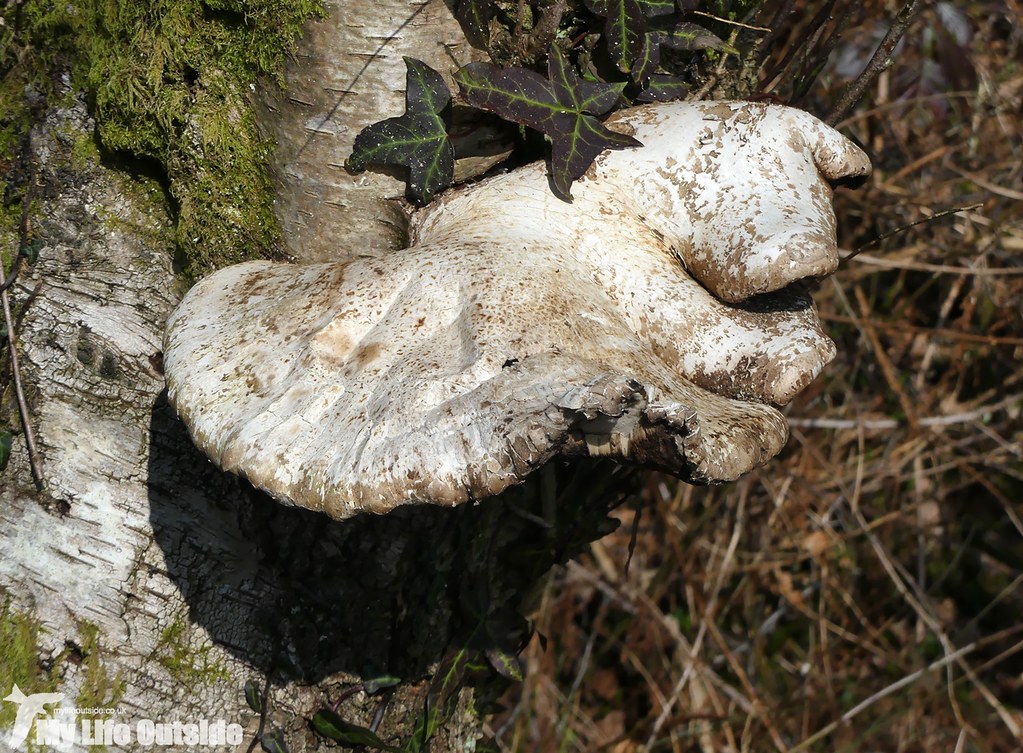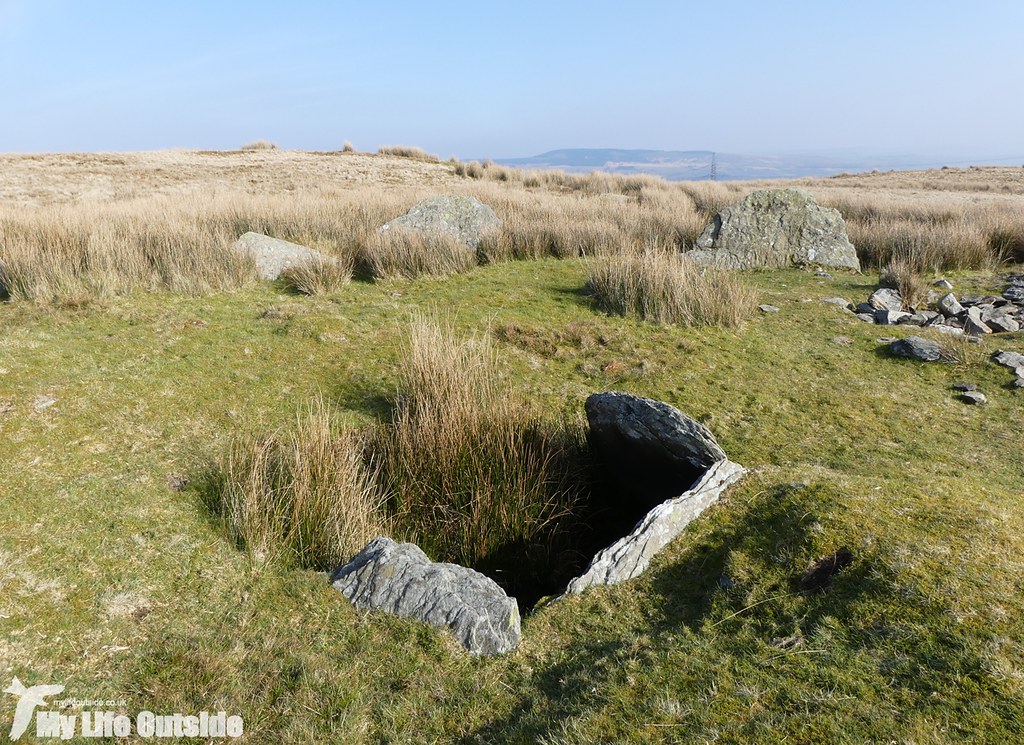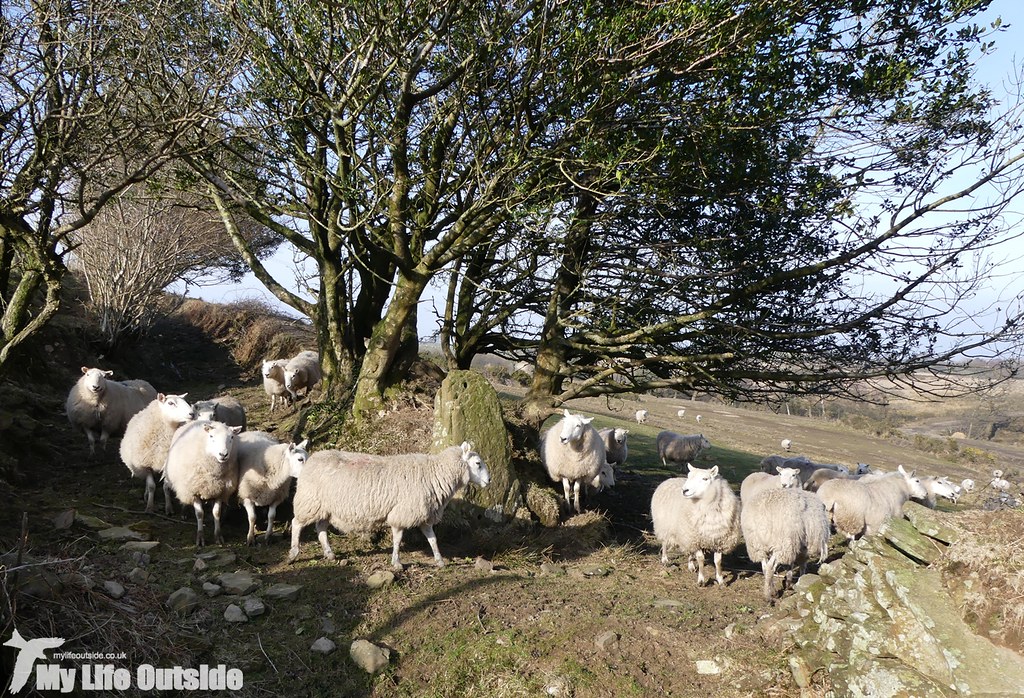The forecast looked very good indeed for Sunday before last providing the perfect excuse to tackle a walk which has been on my ‘to-do’ list for far too long. Our planned route would be the Cwm Clydach walk, a nine mile circuit heading out along the Lower Clydach River before returning across high, open moorland. In the process we were promised birds aplenty, naturally, plus historical remains covering man’s use of this valley over the preceding four thousand years. All this in a stated time of four hours and ten minutes according to the Swansea council website. Clearly they hadn’t taken account of my tendency to linger and wander however and in the end even those apparently arbitrary final ten minutes weren’t enough to prevent us spending an entire day out amongst this seemingly little walked area. Despite it being a gloriously warm and sunny day the only people we met were a couple of local farmers and dog walkers making use of the RSPB reserve, which is where our journey begins.

Long time readers will probably already know of Cwm Clydach but for those who don’t it’s our closest RSPB reserve and follows the route of a now lifted standard gauge railway from the outskirts of Clydach into the mining heart of this once industrious valley. A multitude of workings permeate deep into the rock on all sides but the largest colliery, known locally as Nixon’s, was still extracting coal right up until 1961. A stay of execution until 1978 kept the mine open to provide ventilation to the Graig Merthyr colliery three miles East of here at which point it finally shut. If you recognise the name that’s probably because this is the mine which sits at the heart of my local patch. In the intervening years nature has done a fantastic job of reclaiming its scarred and battered landscape yet, with a careful eye, there are still plenty of artefacts left to discover. From the remains of water tanks used to fill the steam locomotives that once plied this very route through to stables for the housing of pit ponies and even a crumpled mine-cart, this is the kind of walk I enjoy the most and today proved to be one of the very best we’ve had. Right from the off Grey Wagtails were noisily flitting up and down the river whilst off in the distance we could hear the unmistakeable drumming of a Great-spotted Woodpecker. Overhead Great Tits and Blue Tits noisily traversed the still barren canopy above which Red Kites and Buzzards circled freely. What little cloud there had been when I took the first shot of the day above quickly burned off leaving us to walk through dappled shade which proved simply wonderful. With trees just starting to bud and a single Small Tortoiseshell on the wing there were yet more signs of coming Spring including this Toad which was living rather dangerously on a flight of steps. I’m pleased to report that we spotted it just in time to avoid a rather unfortunate end.

Another of Cwm Clydach’s specialities is fungi with over four hundred species recorded to date and undoubtedly more to come. I couldn’t hope to name that many let alone identify them all so was thankful that two of its more obvious inhabitants were both showing well. The first was Birch Polypore, a firm favourite now and the first fungi whose name I actually learned, plus several large colonies of Scarlet Elfcups, impressive in name and looks.


In truth I could have taken so many photos as we wound our way through the woodland but none would have been able to truly capture the tranquil and relaxing atmosphere that seemed to permeate my very soul. This was a feeling that only increased as we crossed the Clydach’s confluence with Nant Llwydyn, by now following an old tramway which led us deeper and deeper into a landscape which felt almost timeless. At one spot the narrow valley widened out into a relatively flat bottom where, through the trees, I spotted what appeared to be a tumbled down structure. Never one to pass up an opportunity to explore we scrambled down and were amazed at what we found. Three large structures were lined up alongside the river, walls now down to below first floor level but clearly a substantial building in its time. Roofing slates could still be seen scattered across the floor, there was at least one large fireplace in relatively good repair and, nestled in a corner, the remains of a spiral staircase. That last one was a real surprise and to me at least hints that this place would have once been very well put together indeed. As to its use we were however none the wiser though a mill would seem the obvious choice given its location and the clear evidence of a leat leading to an impressive piece of ironwork which could be the remains of a waterwheel.


However, my research on the web has hinted that this structure may have been less of a mill and more likely the water powered winding gear for a nearby mine. If you’re after a definitive answer however I am, for now at least, sorry to disappoint. Other than a couple of images on the web I have drawn a blank in my research and may have to track down an old map or two to see if I can find this structure recorded anywhere else.

Pushing on we enjoyed another mile or so of wooded seclusion including plenty of Dipper sightings before a steep climb brought us kicking and screaming back into the light. After being enclosed for so long the wide open expanse of Mynydd Carnllechart came as a shock yet the views across to Capel y Baran proved stunning in their own right.


Desolate and isolated, its congregation is presumably much reduced from when these valleys echoed to the sounds of men at work. Now all we could hear was the song of Skylarks up high in the clear blue sky. Nearby a series of large cairns dot the hillside, part of the ancient man-made landscape up here and a precursor to what would be the highlight of our day. Having walked approximately a mile across the common we came to Carn Llechart, an ancient stone circle and burial mound dating from around 2000BC. It’s presence was clearly no surprise to us as it was one of the features we were most looking forward to seeing, but having done little research beforehand I was simply blown away by its quality. A series of twenty four low stones sit end to end surrounding an open stone-lined cist (grave) in a location which if you weren’t actively looking for, you’d probably never find. Despite being a short distance off the main path it again feels very isolated and easily lives up to its reputation as one of the best sites of its kind anywhere in Wales.


Tearing ourselves away we were soon off the common and into farmland where an old landscaped tip held a series of what, at first glance at least, appeared to be another series of ancient standing stones. However, given the relatively modernity of the surrounding landscape it quickly became clear that these were a more recent installation, though impressive nonetheless. In fact we were so taken with them that we followed their alignment in completely the wrong direction. We only realised our mistake upon reaching a gate with the always ominous “No Walkers” sign. Now this raises two points. Firstly another sign back the way we had come would clearly not go amiss as the presence of this slightly unhelpful second sign hints that we are not the first to have made the same mistake. Secondly a note to the effect of “it’s behind you” would have been immeasurably helpful given that the correct route is hidden behind the brow of a hill. Of course I could have read the map more carefully but where’s the fun in that?

Back on course and losing altitude rapidly the landscape opened up further to reveal Pontardawe off in the distance. There was also a distinctive yet hard to place call, one which we soon traced to a Peregrine Falcon shouting its lungs out from atop an electricity pylon. One of the birds which frequents my office perhaps? My overriding memory of this stretch though will probably be the sight of Sheep running off both fields and common land alike on the off-chance that we were going to feed them. Their disappointment was almost palpable as they first lingered before begrudgingly wandering off.

From here we deviated from the published route slightly and instead of heading across more farmland took a short stretch of country lane back to the river where we retraced our steps. Once again Dippers and Grey Wagtails were abundant and we ended up finishing with superb views of a Fox just a short distance from the car. Clearly just awoken it had no idea as to our presence and was happily walking the riverbank until the reality of its situation dawned. Looking straight at us it was soon heading up the valley side where, with one last glance back towards us, it vanished from sight.



0 Comments